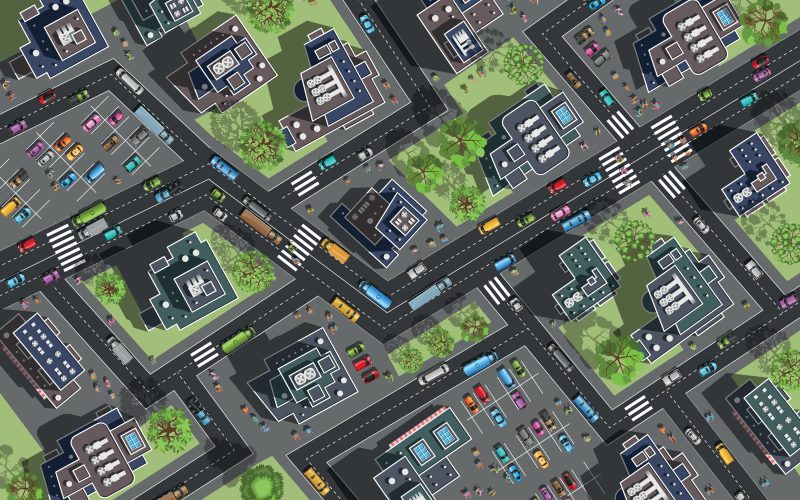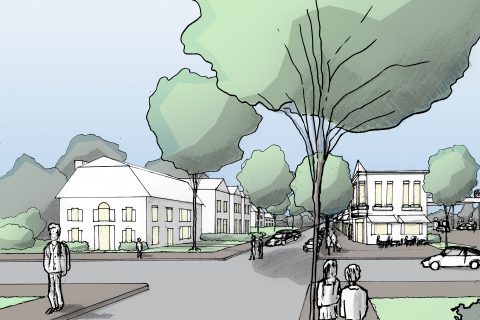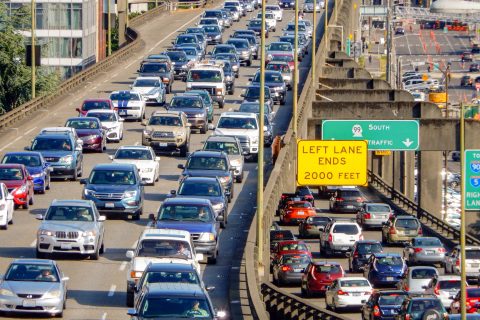Transportation systems have been historically marred by inequality. Veronica O. Davis is a civil engineer, planner, public speaker and community activist. She joins host Krys Boyd to discuss how we should measure success by counting how we move people instead of vehicles – and about how we might take a more human-centric approach to urban planning. Her book is “Inclusive Transportation: A Manifesto for Repairing Divided Communities.”
What we can learn from foreign urban planning
By Shaunessy Renker, Think Intern
The contrast between the transportation systems in foreign countries and the United States is stark. Civil engineers have argued that urban planning in the U.S. has proven to fail at centering humans and their ability to move around the metropolitan landscape in which they live. The thought is poor executive decisions have resulted in the isolation of communities and the heavy reliance on automobiles. But Veronica O. Davis, author of “Inclusive Transportation,” says that a solution to this regression is feasible, especially after visiting countries whose urban planning has been highly successful.
“I shared in the book my travels to Antigua, Guatemala as well as Brussels in Belgium and in those cases it is very pedestrian-centric,” says Davis. “It is very great to be able to navigate without having to have a vehicle to get around…many of us vacation in these places where it is a great experience to be able to walk, roll, bike around a city and be able to absorb that city and that culture while you’re there.”
She notes that urban settlements in parts of Europe generally do not sprawl nearly as much as they do in the United States and most highways abroad have two or three lanes. Investing and shifting priorities in transportation planning takes up much less space than if every civilian in sitting in their own individual vehicle.
Civil planners look at data and projections on population, employment, density, etc. in order to account for their city’s growth in the transportation network. However, sometimes simply looking at the numbers can be hazardous in that the solution they initially arrive upon to accommodate factors such as traffic is widening roads and highways. This takes a toll on local businesses and housing. Davis has a call-to-action:
“What if we had an audacious goal that says we want to get rid of half of the pavement in the street in the next 30 years? What then does the city look like?” she says. “If we’re going to have less space available, we have to move more people more efficiently and that gets you to high-capacity transit, better sidewalks, better bike lanes to facilitate movement.”
Davis argues that some of the reasons why bike lanes have not been implemented in the U.S. to the extent that they have been other countries is because priorities in urban planning are muddled and focused on widening roads or constructing new highways. The focus in marking bike lanes is primarily geared toward commute to and from business districts, not the trips we take to grocery stores, schools, etc. With the larger vehicles we have in America, Veronica Davis says “we need to have a standard of high comfort” so that more civilians will feel safe enough to utilize bike lanes, particularly children.
“We don’t know, particularly with technology, what the future looks like. So why not get to a vision of what we want the future to be?” Davis says. “Dan Reid, a colleague from the Maryland area, has a fantastic test called the ice cream test. And that is a child should be able to go and get an ice cream cone and walk home with it before it melts. So, part of that is the transportation side of it that a child feels confident and safe to be able to navigate from the ice cream shop to home.”





